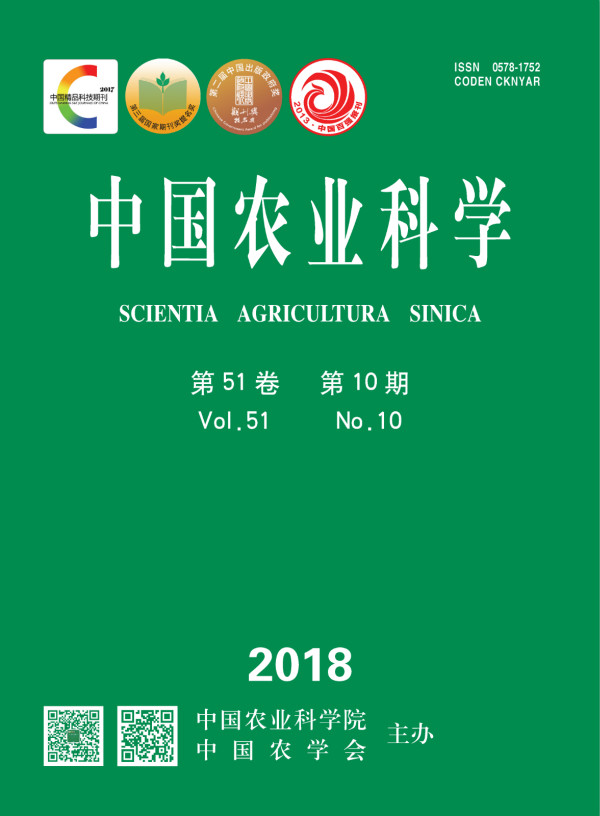【Objective】 The effects of different rootstock on ‘87-1’ grape photosynthetic characteristics and chlorophyll fluorescence characteristics were evaluated, and the results will provide theoretical basis for screening suitable cultivation rootstock.【Method】 Two- and three-year-old ‘87-1’ grape were grafted on eight kinds of rootstocks, including Beta, 1103P, 3309C, 140Ru, 5C, SO4, HuaPu NO.1 and KangZhen NO.1 in 2016 and 2017, and the eight kinds of rootstook-scion combinations were planted in grape center technology demonstration areas of Fruit Research Institute of Chinese Academy of Agricultural Sciences (Xingcheng, Liaoning province, east longitude 120.51° and northern latitude 40.45°). Their spacing in the rows and spacing between rows are 2.5 m×4.0 m. Double plant colonization, oblique dry horizontal dragon shape with horizontal curtain werer applied with the integration of water and fertilizer, and other management measures were routine. The Li-6400 Photosynthetic apparatus was used to measure eight rootstock-scions combinations’ light response curve, carbon dioxide response curve, temperature response curve in the cloudless morning. Before the measurement of three kinds of light curves, the optimal function leaf of different rootstock-scion combinations were selected by Li-6400 Photosynthetic apparatus. Li-6400 Photosynthesis apparatus was also used to choose the leaves with the largest net photosynthetic rate of different rootstock-scion combinations. First of all, the light response curve was measured as the carbon dioxide concentration was set at 400 μmol·mol-1, temperature was set as 25℃, gas velocity was set at 500 mmol·s-1, photosynthetically active radiation was set at 2 000, 1 800, 1 500, 1 200, 800, 400, 200, 100, 50, 20, 0 μmol·m-2·s-1 from strong to weak. Secondly, the carbon dioxide response curve was measured as the photosynthetically active radiation was set at 1 200 μmol·m-2·s-1, temperature was set at 25℃, gas velocity was set at 500 mmol?s-1, carbon dioxide concentrations were set at 2 000, 1 800, 1 500, 1 200, 800, 400, 200, 150, 100, 50, 20 μmol·mol-1 from high to low. Finally, the net photosynthetic rate curve was measured as the photosynthetically active radiation was set at 1 200 μmol·m-2·s-1, carbon dioxide concentration was set at 400 μmol·mol-1, gas velocity was set at 500 mmol·s-1, the temperatures were set at 25, 27, 30, 32, 35,27℃ from low to high. And then, the apparent quantum yield, light compensation point, carboxylation efficiency, carbon dioxide compensation point, dark respiration rate were obtained using right angle hyperbolic correction model. And the FMS-2 pulse-modulated fluorometer was used to obtain minimal fluorescence, maximal fluorescence, variable fluorescence, potential quantum yield of PSⅡ, maximal photochemical efficiency of PSⅡ in the dark. Then, variance analysis was used to compare the effects of different stock on photosynthetic parameters of ‘87-1’ grape, and Topsis comprehensive evaluation method was used to rank the eight rootstock-scion. 【Result】 The results of Topsis comprehensive evaluation showed that rootstock-scion combinations of ‘87-1’/3309C and ‘87-1’/1103P were ranked the first and second to tolerate weak light,and with the low light compensation point, high apparent quantum yield, low dark respiration rate. The rootstock-scion combinations of ‘87-1’/3309C and ‘87-1’/Huapu NO.1 were ranked the first and second to tolerate low carbon dioxide levels,and with low carbon dioxide compensation point, high apparent quantum yield. The rootstock-scion combinations of ‘87-1’/SO4, ‘87-1’/Huapu NO.1 were ranked the first and second to tolerate high temperature,and with little net photosynthetic changes at different temperatures and high net photosynthetic rate at high temperature. Furthermore, the results of variance analysis showed that the highest minimal fluorescence was found in ‘87-1’/140Ru and ‘87-1’/SO4 rootstock-scion combinations, the highest of variable fluorescence was found in ‘87-1’/1103P rootstock-scion combination, the highest of rate variable fluorescence and minimal fluorescence were found in ‘87-1’/1103P and ‘87-1’/3309C two kinds of rootstock-scion combinations. There was no significant difference of maximal fluorescence,the rate of variable fluorescence and maximal fluorescence among all 8 kinds of rootsock-scion combinations had no. 【Conclusion】 The rootstocks 3309C and 1103P can improve ‘87-1’ grape weak light tolerance ability efficiently, the rootstock 3309C and Huapu NO.1 can improve ‘87-1’ grape low carbon dioxide level tolerance ability efficiently, the rootstocks SO4 and Huapu NO.1 can improve ‘87-1’ grape high temperature tolerance ability efficiently, the rootstocks 1103P and 3309C can improve the beneficial to the enhancement of ‘87-1’ grape the primary light energy conversion efficiency.









